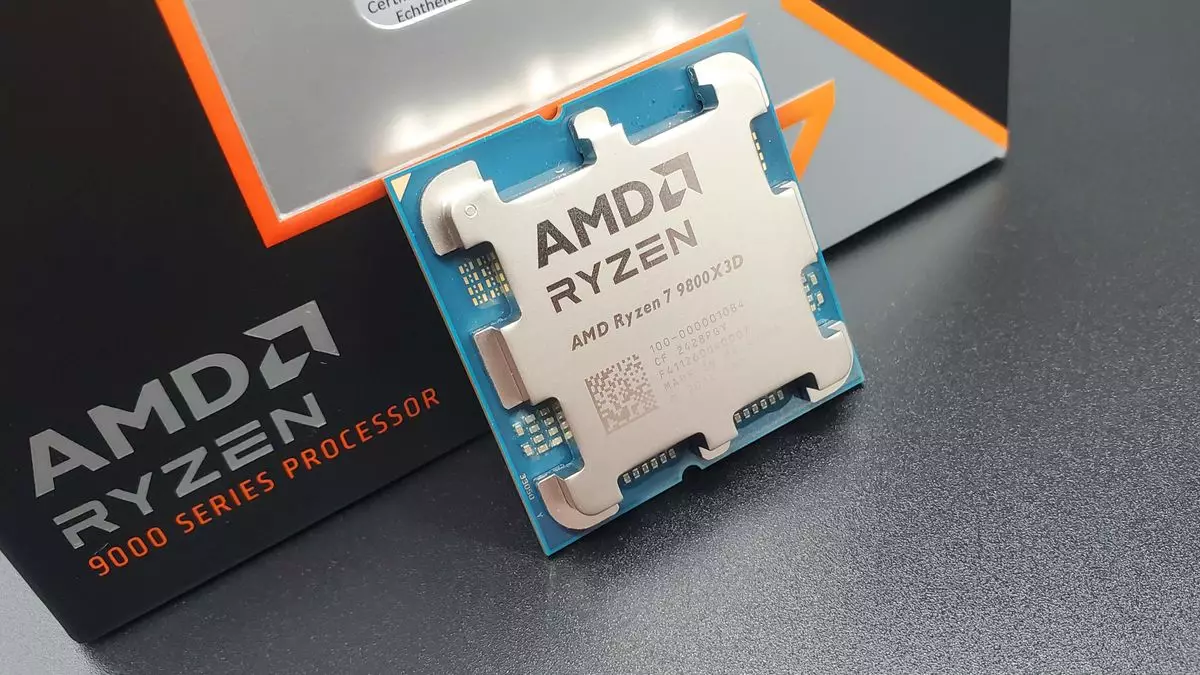As the tech world buzzes with excitement over the latest offerings from Nvidia and AMD, it’s crucial not to overlook the recent developments in the CPU landscape. Both Intel and AMD have unveiled their new line-ups, featuring Intel’s Core Ultra 200S ‘Arrow Lake’ series and AMD’s cutting-edge 9000-series ‘Zen 5’ processors. While the focus may currently be on graphics cards, these new CPUs are making significant waves that merit a closer analysis.
AMD’s Market Surge
AMD recently celebrated a remarkable achievement during its Q4 2024 earnings call, where CEO Dr. Lisa Su reveled in the company’s success in launching new gaming CPUs. According to Dr. Su, the holiday season brought AMD its highest sell-out figures in years. This development is particularly notable, given the persistent challenges in securing reasonably priced Ryzen 7 9800X3D CPUs since their launch. The notion of sell-outs, however, should be approached with caution. While they can indicate high demand, they may also reflect inadequate supply—a duality evident when examining Nvidia’s controversial launches of the RTX 5080 and RTX 5090, often criticized as a “paper launch.”
Despite the supply issues, AMD’s 9000-series has genuinely captivated the market. Dr. Su remarked on the robust adoption of new products, noting that demand has exceeded supply but has palpable momentum as they ramp up shipping in January. Such enthusiasm is essential for AMD, particularly against a backdrop of mixed results from its gaming graphics division, which may be in a transitional phase given the nearing end of its GPU generation. The anticipated launch of the RX 9070 and RX 9070 XT will be telling in terms of how AMD navigates through this shifting landscape.
On the flip side, Intel’s performance in the CPU market has been somewhat less spectacular. The Core Ultra 200S ‘Arrow Lake’ lineup presents a mixed bag of offerings—while it certainly contributes to the broader market, many experts have critiqued its innovation and performance. Compared to AMD, which has struck a chord with consumers, Intel’s latest generations have not ignited the same level of excitement, with some users reporting instability issues in their newer 13th and 14th Gen CPUs.
Given these factors, one might argue that it would have been surprising if AMD hadn’t experienced a surge in its client CPU division. The landscape favors AMD, especially with the Ryzen 7 9800X3D being hailed as the superior gaming CPU—at least until Intel can make a substantial comeback. The pressure is on Intel to innovate further and regain its competitive edge against a resurgent AMD.
The competition extends beyond desktops, as AMD and Intel both vie for dominance in the mobile segment. AMD’s latest AI 300 ‘Strix Point’ processors have garnered attention, finding their way into various laptops and handheld devices, such as the OneXPlayer OneXFly F1 Pro. Meanwhile, Intel’s Core Ultra 200V ‘Lunar Lake’ processors are present in equipment like the MSI Claw 8 AI+. While Lunar Lake models excel in efficiency, they encounter hurdles when competing with the raw graphical capabilities of Strix Point chips.
The mobile sector appears to be closer in performance between the two companies than in the desktop arena—perhaps explaining Dr. Su’s cautious optimism regarding seasonal projections. As they navigate this battleground, both companies will need to adapt to changing consumer demands and preferences.
The Road Ahead
As we look ahead, one crucial element stands out: supply chain challenges. Dr. Su’s comments about the urgency to restock the Ryzen 7 9800X3D highlight a pivotal issue facing AMD: can they scale to meet the skyrocketing demand? The tech community is eagerly watching, with many frustrated by persistent “out of stock” notices. Satisfying this hunger will be crucial for maintaining momentum.
The CPU landscape is a multifaceted arena where AMD currently appears to hold the upper hand, thanks to its meaningful innovations and consumer excitement. However, Intel is not out of the game and must pivot quickly to address its shortcomings. The interplay of supply, demand, and competition will ultimately shape the fate of both companies in this high-stakes showdown. As they work to captivate consumer interest, the future of their rivalry promises to be both dynamic and fraught with unexpected developments.

